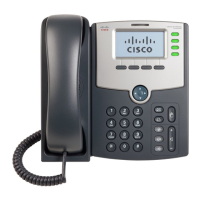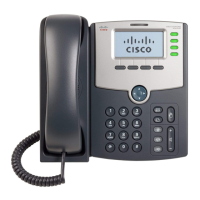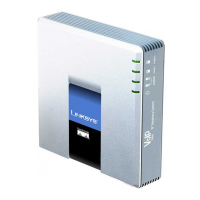Provisioning Basics
Upgrading, Resyncing, and Rebooting Phones
Cisco Small Business SPA300 Series, SPA500 Series, and WIP310 IP Phone Administration Guide 172
6
General purpose parameters are provided to help service providers manage the
provisioning process. Each Cisco IP phone can be configured to periodically
contact a normal provisioning server (NPS). Communication with the NPS does not
require the use of a secure protocol because the updated profile is encrypted by
a shared secret key. The NPS can be a standard TFTP, HTTP or HTTPS server.
The administrator can upgrade, reboot, restart, or resync Cisco IP phones using
the configuration utility. The administrator can also perform these tasks using a SIP
notify message and bypassing the configuration utility.
Upgrading Firmware on a Phone
Use the upgrade URL to upgrade firmware on the Cisco IP phone. You can
upgrade from either a TFTP or HTTP server. The Upgrade Enable parameter on
the Provisioning web page must be set to yes.
STEP 1 Log in to the configuration utility.
STEP 2 Click the Provisioning tab.
STEP 3 Under Firmware Upgrade, in the Upgrade Enable field, choose yes.
Enter the upgrade command into your browser’s address bar to upgrade firmware
on a phone. Use the following syntax:
http://phone-ip-address/admin/upgrade?protocol://server-
name[:port]]/firmware-path
• Protocol defaults to TFTP.
• Server name is the host requesting the URL.
• Port is the port of the protocol being used (for example, 69 for TFTP or 80
for HTTP).
• Firmware-path defaults to /spa.bin (for example, http://192.168.2.217/
admin/upgrade?tftp://192.168.2.251/spa.bin) for SPA phones and /
wip310.img for the WIP310. The firmware-pathname is typically the file
name of the binary located in a directory on the TFTP or HTTP server.
Firmware Upgrade Parameters
The following table defines the function and usage of each parameter in the
Firmware Upgrade section of the
Provisioning
tab.

